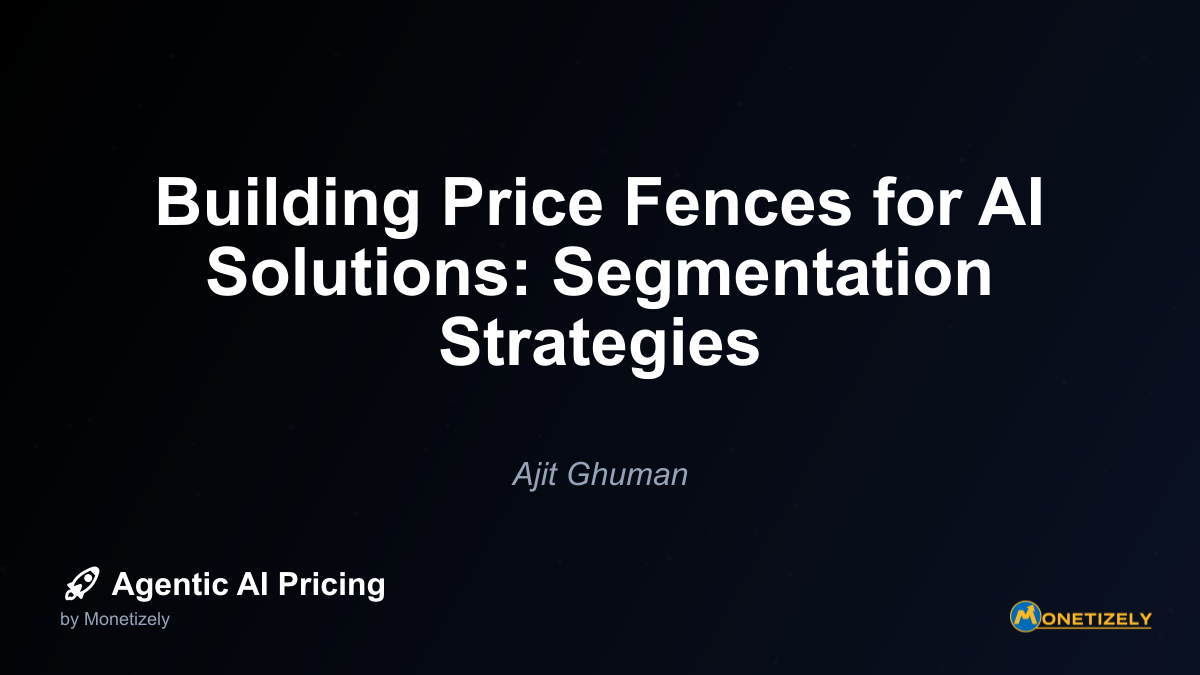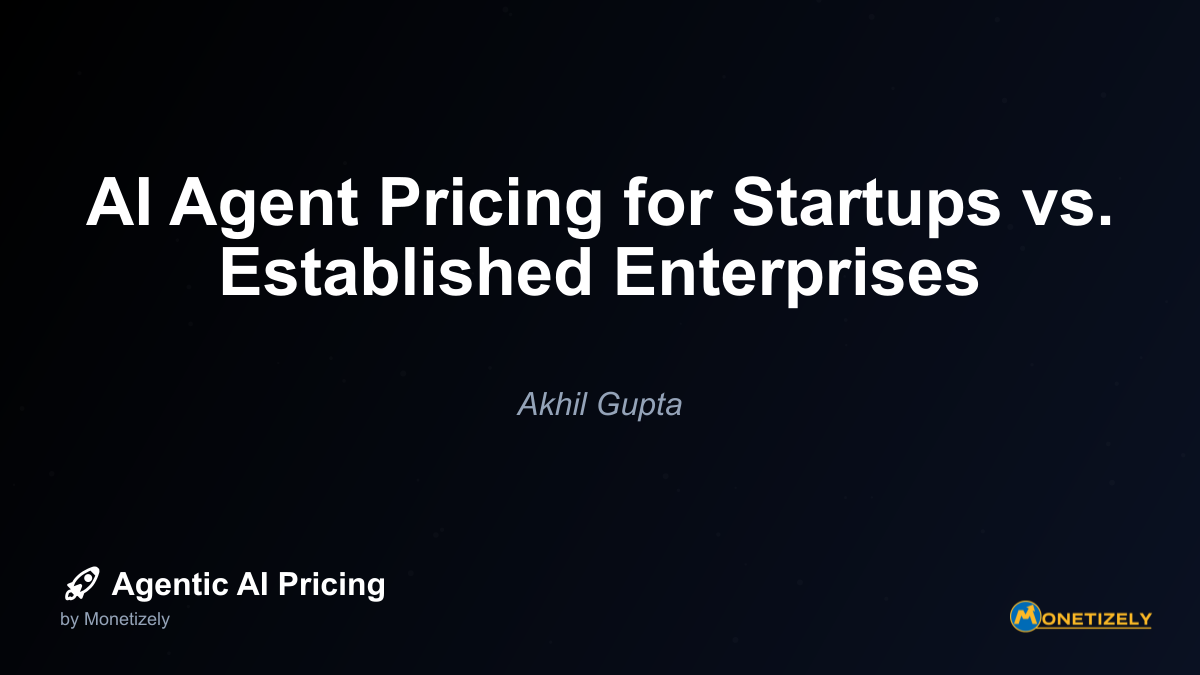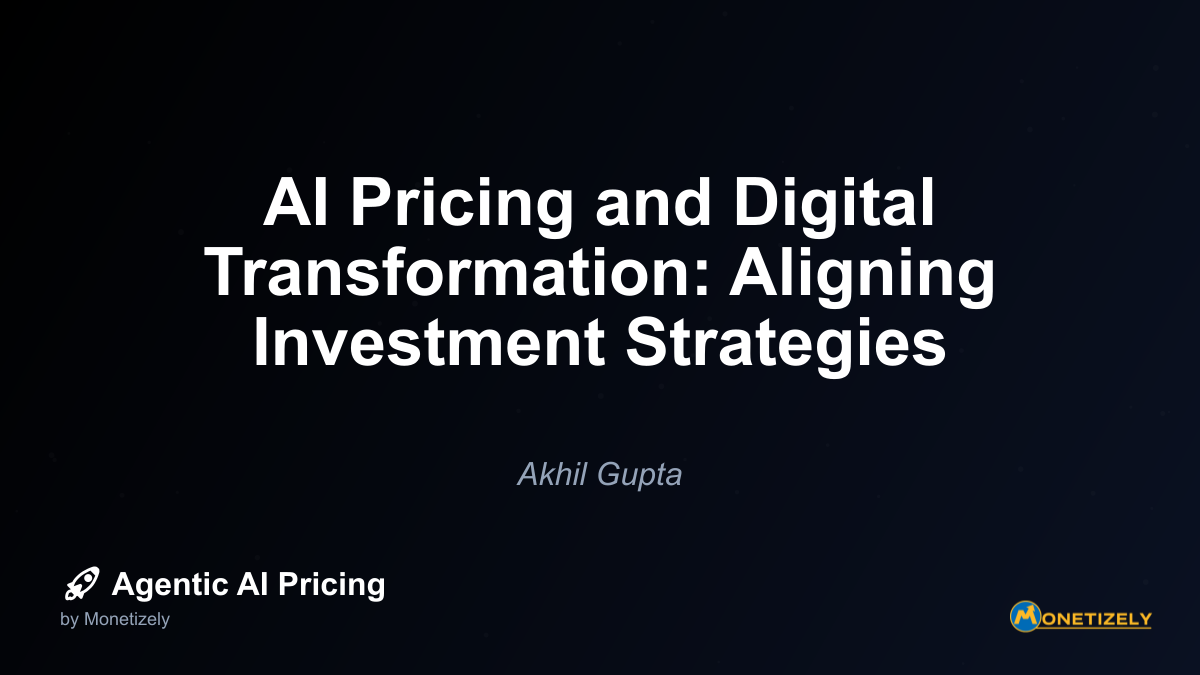· Ajit Ghuman · Strategy · 11 min read
Building Price Fences for AI Solutions: Segmentation Strategies
AI and SaaS Pricing Masterclass
Learn the art of strategic pricing directly from industry experts. Our comprehensive course provides frameworks and methodologies for optimizing your pricing strategy in the evolving AI landscape. Earn a professional certification that can be imported directly to your LinkedIn profile.

In today’s rapidly evolving AI landscape, effective price segmentation strategies have become critical for maximizing revenue while ensuring customer satisfaction. Creating price fences—the boundaries that separate different customer segments and their corresponding pricing structures—requires strategic planning and thoughtful implementation. When done correctly, price fencing enables AI solution providers to capture appropriate value across diverse customer segments without creating friction in the buying process.
Understanding Price Fences in the AI Context
Price fences are criteria or boundaries set by companies to segment customers or offerings, allowing them to charge different prices based on perceived or actual value, usage patterns, or feature requirements. For AI and SaaS products specifically, price fencing is crucial because traditional flat or seat-based pricing models often fail to account for the variable and costly nature of AI resource consumption, such as API calls, token usage, and GPU time.
As AI workloads incur real incremental costs per usage, price fencing ensures companies can align pricing with both costs and value, manage margins effectively, and scale efficiently without experiencing margin erosion. This alignment is particularly important as the global AI market—valued at approximately $391 billion in 2025—continues to grow at a projected CAGR of 35.9% through 2030.
The Strategic Value of Price Segmentation for AI Solutions
Price segmentation delivers multiple strategic benefits for AI solution providers:
Revenue Optimization: Different customer segments have varying willingness to pay. Price fencing allows companies to capture more value from segments with higher willingness to pay while still serving price-sensitive segments.
Cost Recovery: AI solutions often have variable costs based on usage intensity. Segmentation helps recover these costs from heavy users while remaining attractive to lighter users.
Market Expansion: By offering differentiated pricing tiers, companies can serve markets that might otherwise be priced out of their solutions.
Value Alignment: Price fences help align pricing with the actual value delivered to each customer segment, improving perceived fairness.
Competitive Positioning: Strategic segmentation creates defensible market positions against competitors targeting specific segments.
Research shows that 72% of businesses now regard AI-powered segmentation as crucial for personalized customer engagement, indicating high confidence in segmentation’s impact on revenue growth and marketing success. Moreover, about 83% of companies prioritize AI in strategic plans, with 88% of marketers actively using AI for segmentation.
Types of Price Fences for AI Solutions
To implement effective price segmentation, AI solution providers can employ various types of price fences:
1. Feature-Based Fences
Feature-based fences restrict access to specific capabilities based on the pricing tier. For AI solutions, this often means:
- Basic tiers with limited AI functionality
- Premium tiers with advanced AI capabilities
- Enterprise tiers with customized AI models or features
Example: Salesforce’s Einstein AI features are distributed across different pricing tiers, with basic AI analytics in lower tiers and advanced AI-powered prediction and recommendation engines in higher tiers.
2. Usage-Based (Consumption) Fences
Usage-based fences price according to the volume or intensity of use, which is particularly relevant for AI solutions where processing costs scale with usage. These fences may be structured around:
- API calls or requests
- Tokens processed (for language models)
- Compute time or resources consumed
- Data volume processed
Example: OpenAI implements usage-based pricing primarily charged by tokens generated during API calls, combined with tiered plans for large-scale customers. This approach effectively fences prices by usage and customer scale, appealing to a broad developer audience from individual users to enterprises.
3. Outcome-Based Fences
Outcome-based fences tie pricing to the value or results achieved through the AI solution:
- Revenue generated
- Cost savings achieved
- Successful transactions processed
- Accuracy or quality improvements
Example: Intercom Fin utilizes success-based pricing, charging customers only when AI support resolutions succeed, effectively fencing prices by achieved outcomes rather than usage alone.
4. Tiered or Package-Based Fences
Tiered fencing offers predefined packages with different combinations of features, usage limits, and support levels:
- Small/Basic/Starter
- Medium/Professional/Team
- Large/Enterprise/Organization
Example: Replit offers multiple tiers combining subscription fees with usage limits and AI credits, targeting different customer segments and enabling upsells and flexible cost-to-value alignment.
5. Hybrid Models
Hybrid fences combine multiple fencing approaches to create more sophisticated segmentation:
- Base subscription + usage-based components
- Tiered features with usage caps and overage fees
- Outcome guarantees with usage-based pricing
Example: HubSpot revamped pricing by standardizing around seat-based pricing with a “pay as you grow” approach, removing seat minimums, and bundling new AI features into core seats—enabling gradual scaling and easier multi-product adoption.
Building Effective Price Fences Without Creating Friction
The key challenge in price fencing is creating clear boundaries between segments without introducing unnecessary friction into the buying process. Here are strategic approaches to achieve this balance:
1. Base Fences on Observable Customer Characteristics
Effective price fences should be based on characteristics that are:
- Observable: Easily identified and verified
- Relevant: Connected to value perception or usage patterns
- Stable: Not frequently changing
- Meaningful: Reflecting actual differences in value received
For AI solutions, observable characteristics might include company size, industry vertical, usage volume, or specific use cases.
2. Ensure Transparency in Fence Design
Customers should understand why different segments pay different prices. This transparency builds trust and reduces perception of unfairness:
- Clearly communicate the value differences between tiers
- Explain the cost drivers behind usage-based pricing
- Provide examples of typical customers in each segment
- Offer self-selection tools to help customers identify their appropriate tier
Example: OpenAI provides transparent documentation on how usage (tokens) is calculated, enabling users to anticipate and manage costs effectively, building trust and lowering barriers to adoption.
3. Create Self-Selection Mechanisms
The most frictionless price fences allow customers to self-select into the appropriate segment:
- Feature-based differentiation that aligns with different use cases
- Clear usage thresholds that match typical consumption patterns
- Outcome guarantees that appeal to value-focused segments
- Trial periods that help customers understand their needs
Example: Replit and other tiered AI SaaS vendors communicate tier features, included AI credits, and usage caps clearly on their pricing pages, which helps customers self-select appropriate plans aligned with their workloads.
4. Implement Smooth Transition Paths
Customers should be able to move between segments as their needs evolve:
- Proactive upgrade recommendations based on usage patterns
- Automated tier adjustments when thresholds are reached
- Grace periods during transition periods
- Data preservation and continuity across tier changes
Example: HubSpot’s pricing transformation improved customer scalability, reduced friction, and directly boosted Net Revenue Retention (NRR) and Annual Recurring Revenue (ARR) growth by simplifying multi-product adoption and promoting expansion without step jumps.
5. Balance Predictability and Flexibility
Customers value predictability in pricing, but AI solutions often have variable costs:
- Offer usage caps within tiers to provide cost certainty
- Provide usage monitoring tools and alerts
- Allow temporary bursts without immediate tier changes
- Consider hybrid models that blend fixed and variable components
Example: AI product providers generally struggle with balancing cost predictability and dynamic pricing reflecting AI compute costs. Providers increasingly adopt hybrid models mixing subscriptions, usage caps, and outcome-based fees to manage this balance.
Case Studies: Successful Price Fencing in AI Solutions
Case Study 1: OpenAI’s Tiered API Pricing
Implementation: OpenAI created a multi-layered price fencing strategy for its API access:
- Usage-based core pricing: Pay-per-token model for all customers
- Volume discounts: Automatic price reductions at higher usage levels
- Model-based differentiation: Different prices for different AI model capabilities
- Enterprise tier: Custom volume pricing with additional features and support
Results: This approach allowed OpenAI to serve the entire market from individual developers to large enterprises while maintaining appropriate margins across segments. The clear token-based pricing created transparency, while volume discounts encouraged increased usage and customer growth.
Friction Reduction Strategies:
- Detailed documentation explaining token calculation
- Usage dashboards for monitoring consumption
- Clear pricing calculators to estimate costs
- Gradual pricing tiers without sharp cliffs
Case Study 2: HubSpot’s AI Feature Integration
Implementation: When introducing AI capabilities, HubSpot implemented a strategic price fencing approach:
- Feature-based fencing: Basic AI features included in standard tiers
- Premium AI capabilities: Advanced AI tools reserved for higher tiers
- Usage caps: Limits on AI-intensive operations in each tier
- Unified seat-based pricing: Standardized pricing model across products
Results: HubSpot’s pricing transformation improved customer scalability, reduced friction, and directly boosted Net Revenue Retention (NRR) and Annual Recurring Revenue (ARR) growth by simplifying multi-product adoption and promoting expansion without step jumps.
Friction Reduction Strategies:
- Framing changes as improvements in customer value
- Focusing messaging on better scalability and inclusion of AI features
- Promoting fairer pricing with lower costs to scale
- Using open, value-focused communication to avoid customer backlash
Case Study 3: Intercom’s Success-Based AI Pricing
Implementation: Intercom implemented outcome-based price fencing for its AI support solution:
- Success-based pricing: Charges only applied when AI successfully resolves customer issues
- Clear success definitions: Explicit criteria for what constitutes a “successful” resolution
- Tiered implementation: Different success metrics for different customer segments
- Value-aligned pricing: Fees structured as a percentage of demonstrated value
Results: Intercom’s success-based pricing model for AI support allowed precise alignment of value delivered and revenue realized, avoiding charges on poor AI output. This reduced customer objections and increased willingness to pay for effective AI support, contributing to sustained revenue streams.
Friction Reduction Strategies:
- Clearly defining “success” conditions for outcome-based pricing
- Communicating that customers only pay when AI effectively resolves issues
- Simplifying customer decision-making on investing in AI features
- Focusing on use cases with clear success conditions to avoid pricing complexity
Common Price Fencing Pitfalls and How to Avoid Them
1. Overcomplicating the Pricing Structure
Pitfall: Creating too many segments or complex conditions that confuse customers.
Solution:
- Limit the number of pricing tiers (typically 3-5)
- Focus on the most meaningful differentiators
- Use consistent metrics across tiers
- Provide simplified pricing summaries
2. Creating Artificial or Arbitrary Fences
Pitfall: Implementing fences that don’t reflect real value differences or cost structures.
Solution:
- Base fences on actual cost drivers (e.g., token usage, compute time)
- Align fence boundaries with observable value differences
- Test fence designs with customer feedback
- Ensure fences reflect natural segment breaks
3. Setting Fence Thresholds Too Low
Pitfall: Creating usage caps or feature limitations that frustrate customers too quickly.
Solution:
- Analyze actual usage patterns before setting thresholds
- Set caps at levels that accommodate most normal usage
- Provide visibility into approaching limits
- Implement grace periods for occasional overages
4. Insufficient Value Differentiation Between Tiers
Pitfall: Creating tiers without meaningful value differences to justify price differences.
Solution:
- Ensure each tier offers distinct, valuable capabilities
- Focus on features that matter to specific segments
- Create clear “step-up” value for higher tiers
- Regularly review and enhance tier differentiation
5. Poor Communication of Pricing Structure
Pitfall: Failing to clearly explain the pricing model and segment boundaries.
Solution:
- Develop clear, transparent pricing pages
- Create comparison tools for different tiers
- Provide case studies of typical customers in each segment
- Train sales teams to effectively communicate the pricing model
Implementing a Price Fencing Strategy: Step-by-Step Framework
Step 1: Segment Your Market Based on Value Perception
Start by understanding how different customer groups perceive and derive value from your AI solution:
Analyze existing customer data:
- Usage patterns and intensity
- Feature utilization
- Outcomes achieved
- Customer characteristics
Conduct customer research:
- Willingness-to-pay studies
- Feature importance surveys
- Value perception interviews
- Price sensitivity analysis
Identify natural segment boundaries:
- Usage volume clusters
- Feature requirement groups
- Budget constraints
- Value sensitivity differences
Step 2: Align Fences with Cost Drivers
Ensure your price fences reflect the actual cost structure of your AI solution:
Analyze variable cost components:
- API call costs
- Token processing expenses
- Compute resource utilization
- Data storage requirements
Determine cost scaling factors:
- How costs increase with usage volume
- Economies of scale thresholds
- Fixed vs. variable cost components
- Cost variability across customer types
Create margin-preserving fence boundaries:
- Set usage limits that maintain target margins
- Align feature availability with development costs
- Structure tiers to ensure profitability across segments
Step 3: Design the Fence Structure
Based on your segmentation and cost analysis, design a coherent price fence structure:
Select primary fencing dimensions:
- Feature-based differentiation
- Usage-based limitations
- Outcome guarantees
- Customer characteristic requirements
Determine tier structure:
- Number of pricing tiers (typically 3-5)
- Price points and differentials
- Upgrade/downgrade paths
- Enterprise or custom options
Create hybrid elements if needed:
- Base subscription + usage components
- Feature access + outcome guarantees
- Tiered structure with volume discounts
Step 4: Develop Clear Communication Materials
Create materials that clearly explain your price fencing approach:
Pricing page design:
- Visual tier comparisons
- Feature and limitation summaries
- Ideal customer descriptions for each tier
- Value proposition statements
Self-selection tools:
- Usage estimators or calculators
- Needs assessment questionnaires
- ROI calculators for each tier
- Tier recommendation engines
Sales enablement resources:
- Segment identification guidelines
- Value articulation scripts
- Objection handling resources
- Case studies for each segment
Step 5: Implement Monitoring and Optimization Systems
Establish systems to track fence effectiveness and optimize over time:
Metrics to monitor:
- Segment distribution and migration
- Upgrade/downgrade patterns
- Customer satisfaction by segment
- Margin realization across tiers
Feedback mechanisms:
- Regular customer interviews
- Usage pattern analysis
- Sales team input collection
- Competitive pricing monitoring
Optimization processes:
- Regular fence boundary reviews
- Feature allocation adjustments
- Price point refinements
- New segment identification
Advanced Price Fencing Techniques for AI Solutions
Dynamic Fencing Based on Usage Patterns
Advanced AI solutions can implement dynamic price fences that adapt to actual usage patterns:
- Automatic tier adjustments based on sustained usage changes
- Personalized package recommendations based on usage history
- Predictive models that suggest optimal pricing plans
- Temporary access to higher-tier features during peak needs
Value-Based Fence Customization
For enterprise customers, create customized fence structures based on specific value drivers:
- Industry-specific value metrics and guarantees
- Custom feature bundles aligned with use cases
- ROI-based pricing tied to business outcomes
- Implementation-specific usage allowances
Competitive Positioning Fences
Design fence structures that create clear differentiation from competitors:
- Feature bundles that highlight competitive advantages
- Price points positioned strategically against alternatives
- Unique metrics or guarantees competitors can’t match
- Segment-specific messaging that addresses competitive weaknesses
Behavioral Economics in Fence Design
Apply behavioral economics principles to create more effective price fences:
- Decoy tiers that make target tiers more attractive
- Anchoring effects through strategic tier ordering
- Loss aversion by highlighting features not available in lower tiers
- Endowment effects by offering full-feature trials with selective downgrading
Measuring Price Fence Effectiveness
To ensure your price fences are working effectively without creating friction, monitor these key metrics:
1. Segment Distribution Metrics
- Tier distribution: Percentage of customers in each pricing tier
- Segment migration: Rate at which customers move between tiers
- Segment stability: Average time customers remain in each tier
- New customer tier selection: Initial tier choices of new customers
2. Revenue and Margin Metrics
- Average revenue per user (ARPU) by segment
- Contribution margin by segment
- Lifetime value (LTV) by segment
- Price realization (actual vs. list price) by segment
3. Customer Experience Metrics
- Net Promoter Score (NPS) by segment
- Customer satisfaction with pricing model
- **Pricing
Co-Founder & CEO
Ajit is the author of Price To Scale, a top book on SaaS Pricing and is the Founder of Monetizely. Ajit has led and worked in pricing and product marketing at firms like Twilio, Narvar and Medallia. His work has been featured in Forbes and VentureBeat. Ajit regularly consults with software companies from Seed stage to post-IPO on pricing strategy. Ajit is also a highly-rated co-instructor for 'The Art of SaaS Pricing and Monetization' on Maven.
Pricing Strategy Audit
Let our experts analyze your current pricing strategy and identify opportunities for improvement. Our data-driven assessment will help you unlock untapped revenue potential and optimize your AI pricing approach.




